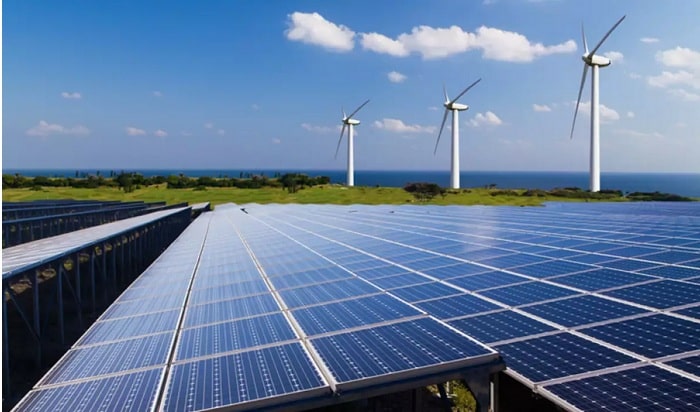Reaching a majority renewables grid will deploy over $1 trillion in capital investment into the US economy over the next decade, according to a new study released by consultancy firm Wood Mackenzie.
This will help support 980,000 direct jobs, stabilize wholesale power prices, and reduce the country’s carbon emissions by over 60%. Targeted administrative actions and Legislative policies are essential for the US to achieve these benefits within the next ten years.
Clear, transmission infrastructure expansion and improvements are critical to enabling this transition to a cleaner American electric grid.
The study released in partnership with the American Clean Power Association states that: Administrative actions alone can double renewable energy penetration within the next decade:
- A Presidential administration can accelerate transmission infrastructure expansion to unlock wind and solar resources.
- Under administrative actions alone, renewable energy can grow from 19% to 37% of US electricity, due to transmission expansion, better access to federal lands and waters, and technology advancement.
- Additional legislative policies that require and/or incentivize clean energy, accelerate the retirement of the U.S. coal fleet, significantly increase energy storage capacity, and massively improve grid infrastructure make a 50% renewable electric sector achievable.
2. Transmission focused policies are critical to unlocking renewable potential:
- Upgrading existing transmission lines and building new lines will help alleviate congestion and provide low-cost power where it is needed most.
- Northeast transmission upgrades will help offshore wind deliver power to consumers.
- Significant investment in transmission infrastructure is foundational for a majority renewables future.
3. Presidential Administrative and Legislative actions driving to 50% renewable energy by 2030 can be a major source of economic stimulus:
- 50% renewables by 2030 will catalyze nearly 1 million direct, quality, well-paying jobs in construction, installation, operations, manufacturing, and supply chain.
- Average wholesale prices will remain stable and declining through the decade.
- Grid stability and reliability are maintained through transmission, energy storage additions, and sufficient grid reserve margins.
- Total capital investment to reach 50% renewables tops $1 trillion by 2030, with at least a quarter of that investment occurring local to renewable projects.
The job benefits from a 50% renewable energy future will be felt in states from coast to coast. For example, Indiana, Pennsylvania, California, Ohio, New Jersey, New York, and Virginia will each gain over 30,000 new jobs, with Illinois, Maryland, and North Carolina each adding over 20,000.
Another 11 states will add at least 10,000 new jobs as part of the transition to a cleaner electric grid. These careers include those in new and expanded domestic manufacturing facilities to provide the local supply chains required for clean energy development.
Local benefits will not end at job creation and the growth of the US economy—these renewable projects will be major contributors to state and local tax revenues, as well as payments to landowners.
Pushing towards a 50% renewable energy future is expected to deliver upwards of $64 billion over the decade in tax and landowner-lease payments.
Amy Farrell, ACP Senior Vice President of Government and Public Affairs, said: “This research shows that a collaborative promise of an American grid powered by wind, solar, hydropower, energy storage, and other renewables represents an economic powerhouse that will lead our country towards a more prosperous, healthier, and cleaner future.
“A majority renewables electric system for the US is possible within a decade and will deliver much-needed investments in our economy and create a pathway toward steady, well-paying employment for workers across the country.





































